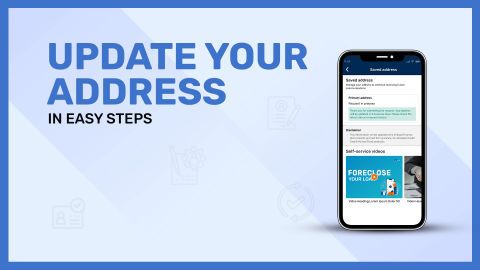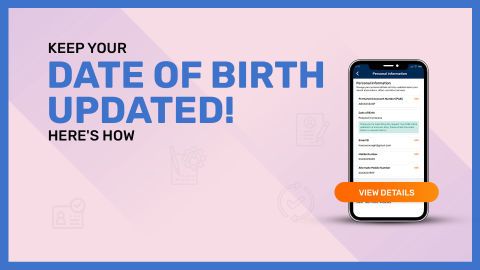Government impersonation scams involve fraudsters posing as representatives from various government departments, such as the Income Tax Department, Customs, or law enforcement agencies. They employ tactics like fake identification, official-sounding communication, and threats of legal action to coerce victims into providing personal information or making payments.
The rise of digital communication platforms has made it easier for scammers to reach potential victims. Emails, phone calls, and messages that appear legitimate can be challenging to distinguish from genuine correspondence. As a result, individuals across India have fallen prey to these deceptive practices, leading to substantial financial losses and compromised personal data.
Understanding the nature of these scams, recognizing common red flags, and knowing how to respond are crucial steps in protecting oneself. This guide aims to shed light on the various facets of government impersonation scams, providing readers with the knowledge and tools necessary to identify and avoid falling victim to such fraudulent activities.
What is government impersonation
Government impersonation refers to fraudulent activities where individuals pose as officials from government agencies to deceive and exploit victims. These impersonators often claim to represent departments like the Income Tax Department, Customs, or law enforcement agencies, using this guise to extract money or sensitive information.The primary objective of such scams is to instill fear or urgency in the victim. For instance, a scammer might call, alleging unpaid taxes and threatening arrest unless immediate payment is made. Alternatively, they might claim that a package has been seized by customs and requires a fee for release.
These fraudsters employ various tactics to appear legitimate. They might use spoofed phone numbers that mimic official helplines, send emails with government logos, or even produce fake identification cards. In some cases, they might have access to personal information, making their claims seem more credible.
The impact of government impersonation scams is profound. Victims not only suffer financial losses but also experience emotional distress and a breach of trust. Moreover, such scams can lead to identity theft, where the victim's personal information is used for further fraudulent activities.
Awareness is the first line of defense. By understanding the methods employed by these scammers and staying informed about common schemes, individuals can better protect themselves and their communities from falling prey to such deceitful practices.
6 most common government impersonation scams
| Scam Type | Description |
| Fake Income Tax Calls | Scammers claim unpaid taxes and threaten legal action unless immediate payment is made. They may use official-sounding language and spoofed numbers to appear legitimate. |
| Customs Package Scams | Victims are informed of a package held at customs requiring a fee for release. Often, the package is fictitious, and the urgency is fabricated to prompt quick payment. |
| Police or Law Enforcement Calls | Fraudsters pose as police officers, accusing victims of involvement in criminal activities. They demand fines or bribes to avoid arrest, leveraging fear to extract money. |
| Digital Arrest Scams | Individuals are told they're under "digital arrest" for alleged crimes. Scammers use video calls with fake uniforms and IDs, coercing victims into transferring funds to avoid legal consequences. |
| TRAI Impersonation Scams | Callers pretend to be from the Telecom Regulatory Authority of India, alleging misuse of the victim's phone number and threatening disconnection unless a fee is paid. |
| Fake Government Job Offers | Victims receive offers for government jobs, requiring upfront payments for training or processing. These offers are fraudulent, and the promised jobs do not exist. |
How scammers operate: step-by-step breakdown
- Target Identification: Scammers often select victims through data breaches, social media, or random selection, focusing on individuals who may be more susceptible to fear-based tactics.
- Initial Contact: The scammer reaches out via phone call, email, or message, posing as a government official. They may use spoofed numbers or official-looking email addresses to appear credible.
- Creating Urgency: The fraudster presents a fabricated issue, such as unpaid taxes or a seized package, emphasising immediate action to avoid severe consequences like arrest or fines.
- Information Extraction: Under the guise of verification, the scammer requests personal details, including Aadhaar numbers, bank account information, or OTPs, which can be used for identity theft or unauthorised transactions.
- Demanding Payment: The victim is instructed to transfer money through specific channels, often to accounts that are difficult to trace. The urgency and fear tactics aim to prevent the victim from questioning the legitimacy.
- Termination of Contact: Once the payment is made or information is obtained, the scammer ceases communication, leaving the victim unable to reach them and realising the deception only after the damage is done
Red flags: how to detect a scam call/email
- Unsolicited Contact: Receiving unexpected communication from someone claiming to be a government official, especially if you haven't initiated any related process.
- Urgent Threats: Being told of immediate legal action, arrest, or fines unless prompt action is taken.
- Request for Personal Information: Legitimate government agencies typically do not ask for sensitive information like passwords, OTPs, or full bank details over the phone or email.
- Payment Demands: Being asked to transfer money to resolve issues, especially through unconventional methods like gift cards, e-wallets, or cryptocurrency.
- Poor Language and Grammar: Official communications usually maintain professional language. Emails or messages with grammatical errors or unprofessional tone can be indicative of scams.
- Suspicious Email Addresses or Phone Numbers: Official emails usually come from government domains (e.g., @gov.in). Be wary of addresses that mimic official ones but have slight variations.
- Pressure to Act Quickly: Scammers often create a sense of urgency to prevent victims from thinking critically or seeking advice.
- Lack of Verifiable Information: Inability or refusal to provide verifiable credentials or official documentation upon request.
How to report & recover from scams
- Immediate Reporting: As soon as you suspect a scam, report it to the National Cyber Crime Reporting Portal atcybercrime.gov.in or call the helpline at 1930.
- Inform Your Bank: If you've shared banking details or made a payment, contact your bank immediately to freeze your account and prevent further unauthorised transactions.
- File a Police Complaint: Visit your local police station to file a First Information Report (FIR). Provide all relevant details, including communication records and transaction receipts.
- Notify Telecom Providers: If the scam involved phone calls or messages, inform your telecom service provider. They can assist in tracing the number and preventing further misuse.
- Monitor Your Accounts: Regularly check your bank and credit card statements for unauthorised transactions. Report any suspicious activity promptly.
- Educate Others: Share your experience with friends and family to raise awareness and prevent them from falling victim to similar scams.
- Stay Updated: Follow official government advisories and updates on common scams to stay informed and vigilant.
Legal actions against impersonators
In India, impersonating a government official is a criminal offense under various sections of the Indian Penal Code (IPC). Key provisions include:- Section 170 IPC: Punishes individuals who impersonate public servants, with imprisonment up to two years, a fine, or both.
- Section 419 IPC: Deals with cheating by personation, leading to imprisonment up to three years, a fine, or both.
- Section 420 IPC: Addresses cheating and dishonestly inducing delivery of property, with penalties including imprisonment up to seven years and a fine.
- Section 66D: Pertains to cheating by personation using computer resources, punishable with imprisonment up to three years and a fine up to Rs. 1 lakh.
Victims are encouraged to report such incidents promptly, ensuring that perpetrators are brought to justice and similar crimes are deterred.
Conclusion
Government impersonation scams are a growing concern in India, exploiting the trust citizens place in official institutions. These scams not only lead to financial losses but also erode public confidence in genuine governmental communication.Awareness and vigilance are paramount. By understanding the tactics employed by scammers, recognizing red flags, and knowing the appropriate steps to take when confronted with suspicious communication, individuals can protect themselves and others from falling victim.
It's essential to remember that legitimate government officials will not demand immediate payments or sensitive personal information over unsolicited calls or emails. Always verify the authenticity of such communications through official channels.
In the digital era, staying informed and cautious is our best defense against fraud. By fostering a culture of awareness and prompt reporting, we can collectively combat the menace of government impersonation scams and safeguard our communities.




